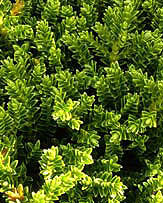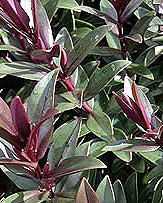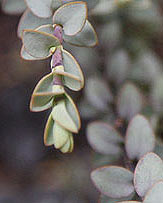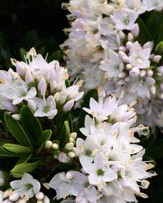Meconopsis - The Himalayan Blue Poppy
The group,of poppies we call Meconopsis is probably best known for the Himalayan Blue Poppies. However a little bit more than meets the eye is available in this wonderful group of plants.
Meconopsis baileyi and M. betonicifolia, are two of the similar, but slightly different species. Meconopsis grandis is one other 'blue poppy', difficult to find in cultivation and seemingly a little varied in colour. And finally Meconopsis horrida, the prickly blue poppy, long flowering and well worth seeking out.
From these we have the hybrids, M. Lingholm being the most widely grown. Lots of other sterile hybrids as well. And yes a white form of the 'Blue Poppy' does exist, Meconopsis betonicifolia alba, very rare, and a violet flowering form, Meconopsis betonicifolia 'Hensol Violet'.
And if you really want to growM. betonicifolia the most magnificent poppies, try moving to Scotland. They love the climate. So grow them from seedlings, grow them from seeds. however unless you live in a cool climate, (Edinburgh and North) then forget about trying to naturalise them.
Growing the Himalayan Blue Poppy
One of the more difficult of the poppies to grow, the Mecanopsis group also provide us with some of the most desirable plants to grow.
The Himalayan Blue poppy, Mecanopsis betonicifolia and Meanopsis grandis are two of the most desirable, with wonderful 'electric blue' flowers, and although seed germination is not that difficult from fresh seeds it is a plant that requires special attention.
Originally from the Himalayas these are a group that require cool temperatures and good moisture during the growing season. They are used to constant moisture but good drainage.
Mecanopsis do not grow well in areas with warm summers and in fact do not like temperatures above 20 C.
In winter they like a little light and cold temperatures, this assists with seed germination. In summer the problems begin, they do like some light, but do not like heat.
Many gardeners grow them beneath deciduous trees, and as long as they do not have to compete with tree roots this can be successful. However Mecanopsis betonicifolia do like a humus rich deep soil, they are gross feeders so liquid seaweed fertiliser every week helps. As they begin to grow, summer begins and temperatures rise, so the coolest position possible is required.
Propagation
Mostly from seed, and germination can be a little difficult, seeds need to be surface sown, kept moist until germination has commenced and the seedlings are well established. Many species seem to 'resent' being moved as well.
Seeds are best sown in early spring and germination is best with constant moisture and a temperature of around 20C. Surface sowing of seed seems to give the best results.
Although they can be sown in trays, we prefer individual cells as this makes for easier transplanting. Mecanopsis do not really like lime, this will cause discoloration of the flowers and as most gardeners are after the electric blue flower rather than a muddy purple lime must be avoided.
So in summary we are looking for a slightly acidic soil, cool damp summers, a well drained soil, that does not dry out and no hot sun. Having said the Himalayan Blue Poppy is difficult to grow, remember that it will depend on the climate.
Other Mecanopsis species
Of course other Meconopsis species also have their place in the garden, including the well known yellow flowering M. cambrica, or 'Welsh Poppy'. The rare purple / violet flooring Meconopsis impedita is another and finally the yellow flowering Meconopsis autumnalis ( yes it flowers in autumn)
Meconopsis plants and seeds are available from the following nurseries
KEVOCK GARDEN PLANTS - Telephone/Fax: 0131 454 0660
Postal Address: 16 Kevock Road, Lasswade, Midlothian EH18 1HT
An award-winning specialist Scottish nursery with unusual alpine, bog, woodland and herbaceous plants, shrubs and bulbs. We send plants by mail order throughout Europe. Design service available.



